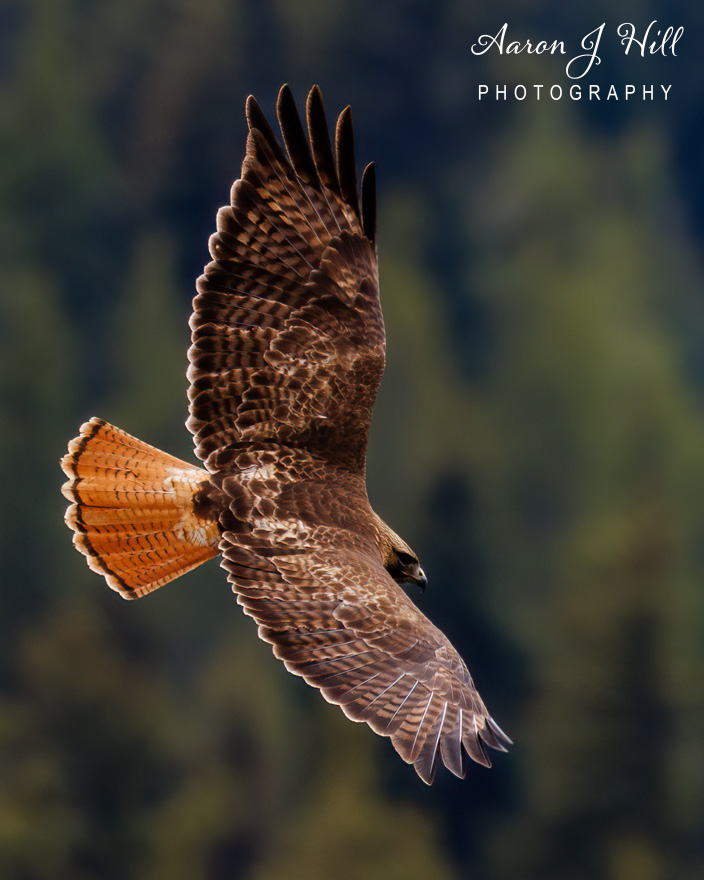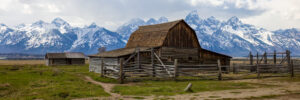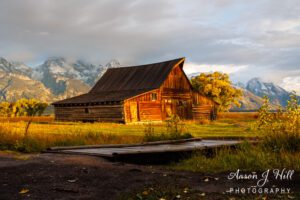Red-tailed Hawk Wildlife Photography
Bridger-Teton National Forest, one of the most stunning landscapes in the United States, is a haven for wildlife enthusiasts and photographers alike. Home to iconic species such as the red-tailed hawk this region offers unmatched opportunities to capture breathtaking images of nature in its purest form. Among the many challenges of wildlife photography, few are as exhilarating as photographing a bird of prey in flight.
This blog shares the story behind capturing this stunning image of a red-tailed hawk in Grand Teton’s Bridger-Teton National Forest, along with photography tips, gear recommendations, and techniques to help you create your own wildlife masterpieces.
Exploring Bridger-Teton National Forest: A Wildlife Photographer's Paradise
Spanning 3.4 million acres in Wyoming, Bridger-Teton National Forest is renowned for its diverse wildlife, dramatic landscapes, and serene vistas. It’s an incredible destination for nature photographers seeking to capture everything from majestic mountain peaks to iconic wildlife species.
The red-tailed hawk, a symbol of power and precision, is a frequent sight in this area. Known for its reddish-brown tail feathers and sharp, piercing cry, this raptor can often be seen soaring above the forest canopy or perched high on tree branches. For photographers, red-tailed hawks in Bridger-Teton National Forest represent the perfect combination of beauty and challenge.
Planning the Shot: Preparation is Everything
Wildlife photography requires careful preparation, especially when shooting fast-moving subjects like hawks in flight. Here’s how I prepared for this adventure:
- Location Research: Before heading out, I studied areas within Grand Teton National Park and Bridger-Teton National Forest known for hawk activity. Early mornings and late afternoons are ideal for spotting raptors, as they are most active during these times.
- Gear Essentials:
- Camera Body: A Canon EOS R5 was my tool of choice for its high-speed autofocus and excellent low-light performance.
- Lens: A 100-500mm telephoto lens provided the reach needed to photograph the hawk without disturbing it.
- Settings:
- Shutter Speed: 1/2000 sec to freeze the hawk’s flight.
- Aperture: f/7.1 for a shallow depth of field, creating beautiful background blur.
- ISO: 400, adjusted to balance the exposure in early morning light.
Having the right equipment is only part of the equation. Knowing how to use it effectively—combined with understanding the behavior of your subject—is what makes a great wildlife photographer.
Tracking the Red-Tailed Hawk
Spotting a red-tailed hawk in Grand Teton National Park requires both patience and a keen eye. I began my day before sunrise, listening for the telltale screeches of a hawk. These birds are known for their excellent vision, allowing them to spot prey from great distances, and they prefer open fields or tall trees for hunting.
As the golden light of dawn illuminated the landscape, I spotted a hawk perched on a high branch. Its distinctive reddish tail feathers glowed in the soft light. Carefully, I positioned myself at a safe distance, using natural cover to avoid alarming the bird.
After several minutes of observation, the hawk launched into the sky, its powerful wings carving through the air. This was the moment I had been waiting for.
Photographing a Red-tailed Hawk in Flight: Tips and Techniques
Capturing a bird in flight, especially a fast-moving raptor, is one of the most rewarding challenges in wildlife photography. Here’s how I managed to freeze the hawk in motion while maintaining sharp focus and a dynamic composition:
- Autofocus Mode: I used continuous autofocus (AI Servo) to track the hawk as it soared.
- Burst Mode: Shooting in burst mode allowed me to capture multiple frames in quick succession, increasing the chances of getting the perfect wing position.
- Panning Technique: I smoothly followed the hawk’s flight path with my camera, ensuring that the bird remained in focus while the background blurred for a sense of motion.
- Composition: By positioning the hawk slightly off-center, I created a visually pleasing image that emphasizes the bird’s flight direction and adds depth to the scene.
The Final Image: A Moment of Wild Beauty
The result is a powerful and dynamic portrait of the red-tailed hawk in flight, showcasing its intricate feather patterns, striking reddish tail, and focused gaze. The blurred green forest in the background creates a natural canvas that draws attention to the hawk’s beauty.
This image captures more than just a bird—it tells a story of the wild, of perseverance, and of the harmony that exists between predator and environment. It’s a moment frozen in time, celebrating the awe-inspiring grandeur of wildlife in Bridger-Teton National Forest.
Tips for Capturing Red-Tailed Hawks
- Scout Locations: Research areas where hawks are frequently seen, such as open meadows and forest edges in Grand Teton National Park.
- Be Patient: Wildlife photography often involves long hours of waiting. Embrace the process.
- Use the Right Lens: A telephoto lens (400mm or higher) is essential for safely photographing birds from a distance.
- Learn Bird Behavior: Understanding how hawks hunt and fly will help you anticipate their movements.
- Respect Nature: Keep a safe distance and prioritize the well-being of the animal over the shot.
Why Bridger-Teton is a Must-Visit for Wildlife Photography
For wildlife photographers, few places rival the diversity and beauty of Bridger-Teton National Forest. From iconic predators like the red-tailed hawk to panoramic views of Grand Teton National Park, this region is a treasure trove of photographic opportunities. Visiting this area not only provides a chance to capture incredible images but also fosters a deeper appreciation for the delicate ecosystems that sustain these creatures.
Final Thoughts
Capturing this red-tailed hawk in flight was both a technical challenge and a deeply rewarding experience. It reminded me of why I fell in love with wildlife photography in the first place—the thrill of the chase, the connection to nature, and the satisfaction of preserving a fleeting moment in time.
Whether you’re an experienced photographer or a passionate beginner, wildlife photography in Grand Teton National Park and Bridger-Teton National Forest promises countless opportunities to hone your skills and create unforgettable memories. So grab your camera, head into the wild, and let nature inspire you.




Pingback: Mountain Bluebird Comprehensive Guide
Pingback: Cedar Waxwings: Identifying and Attracting These Elegant Birds